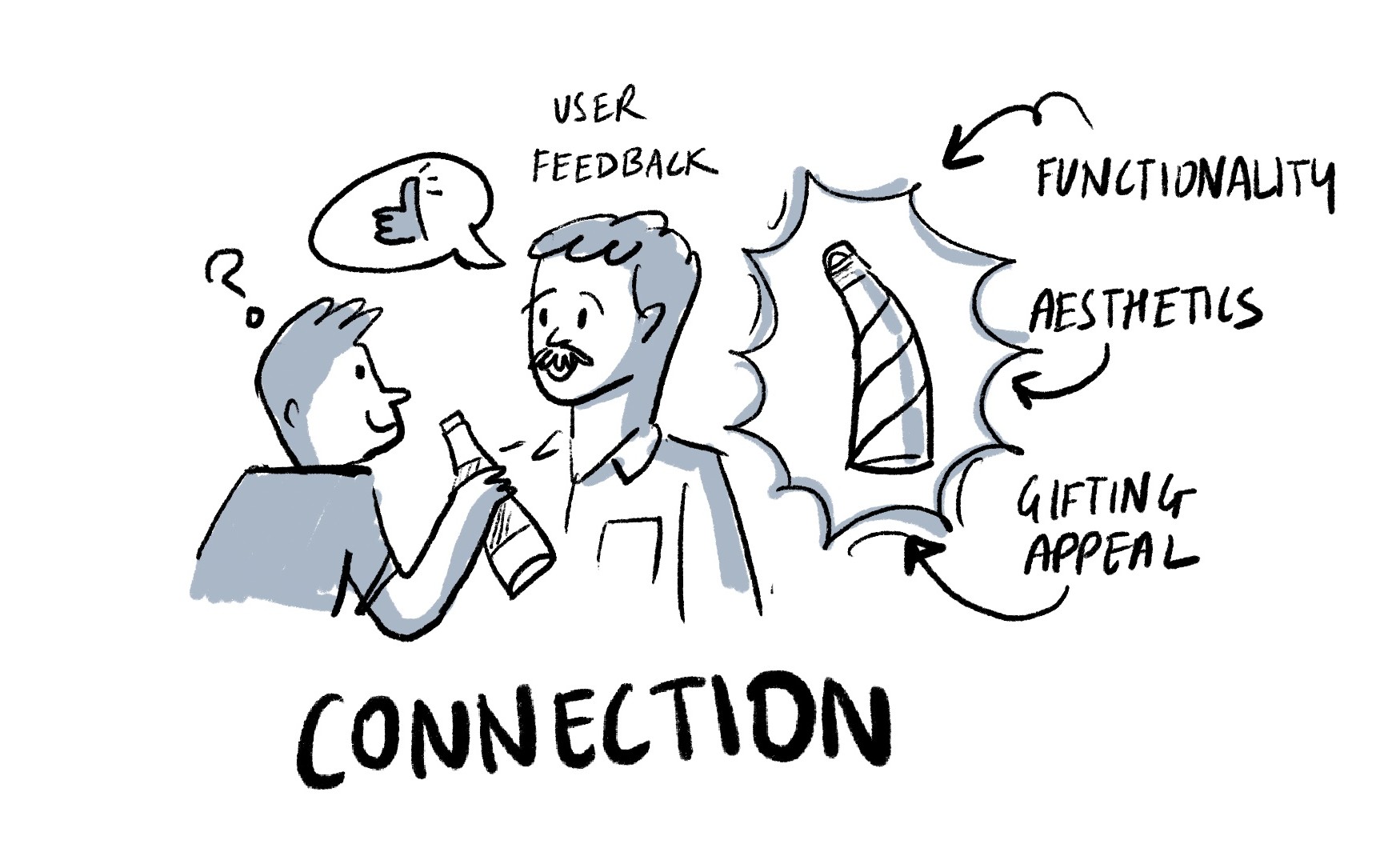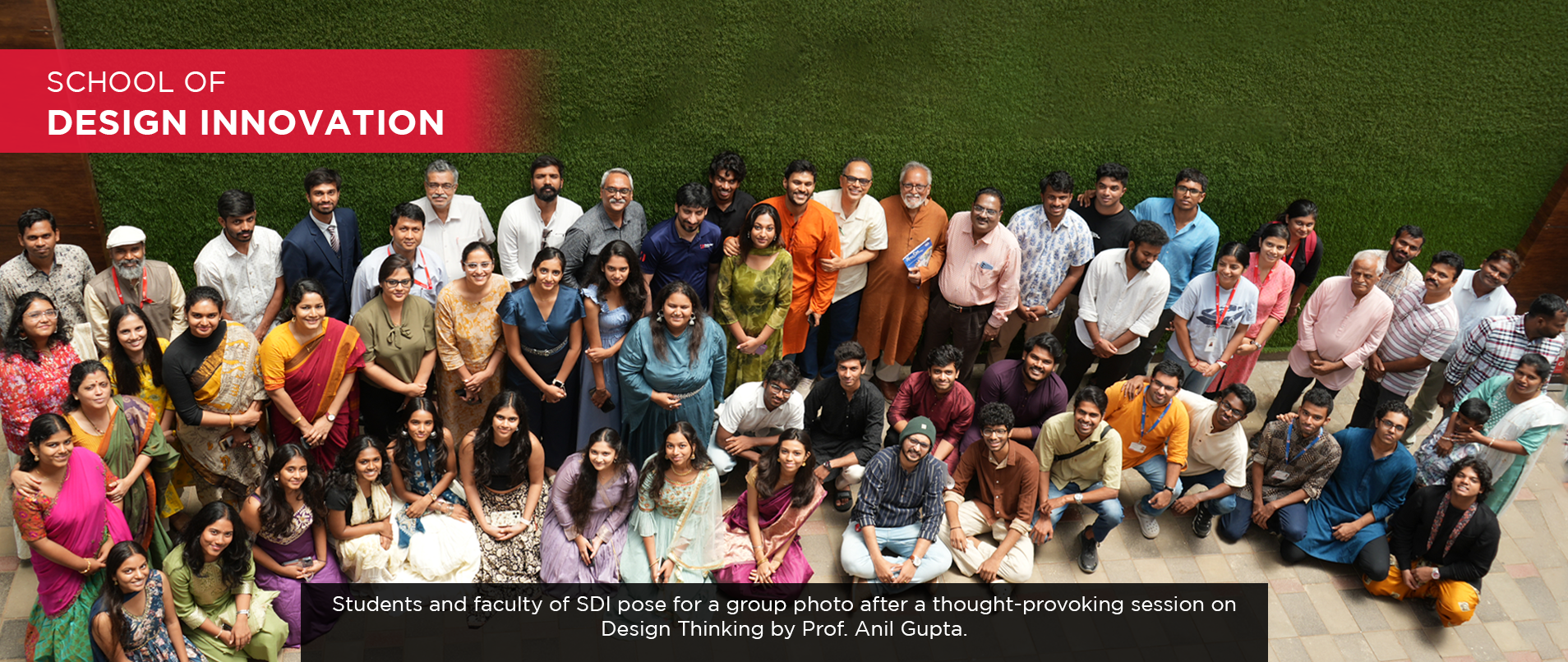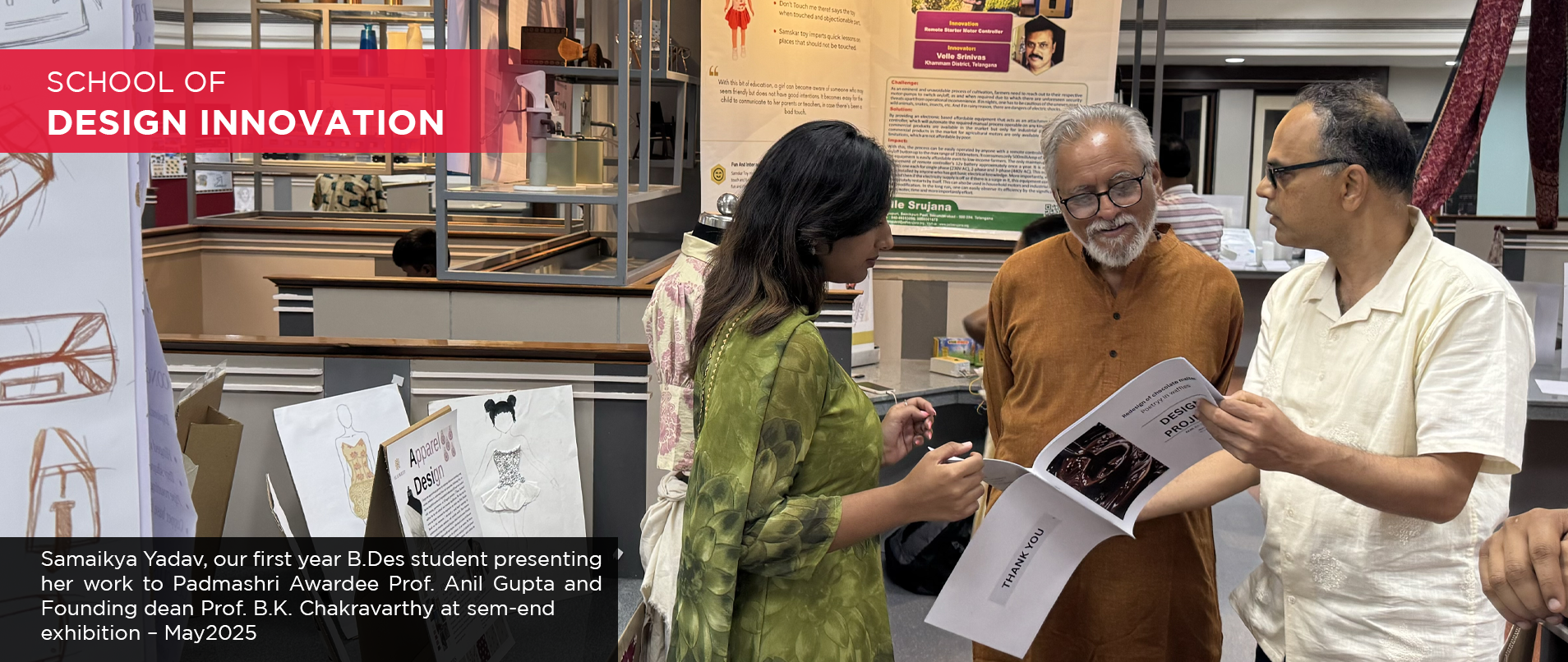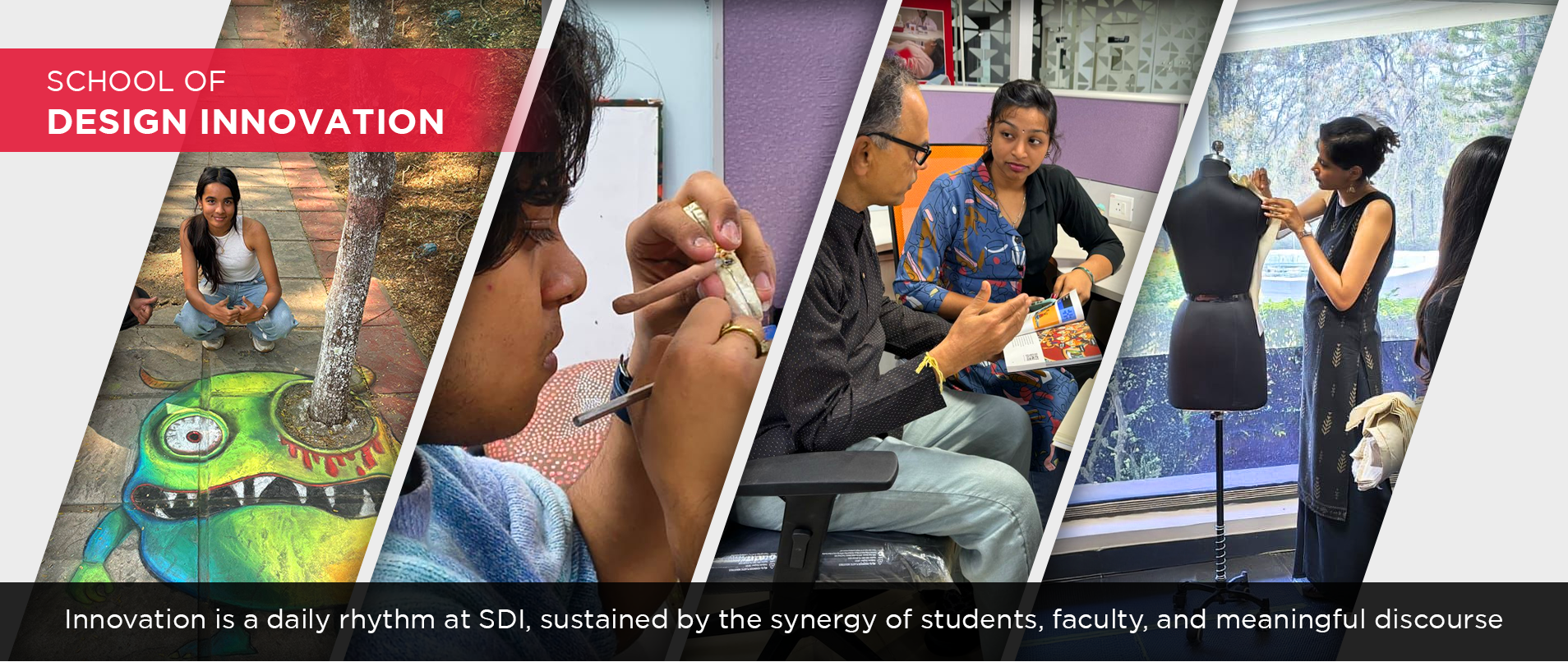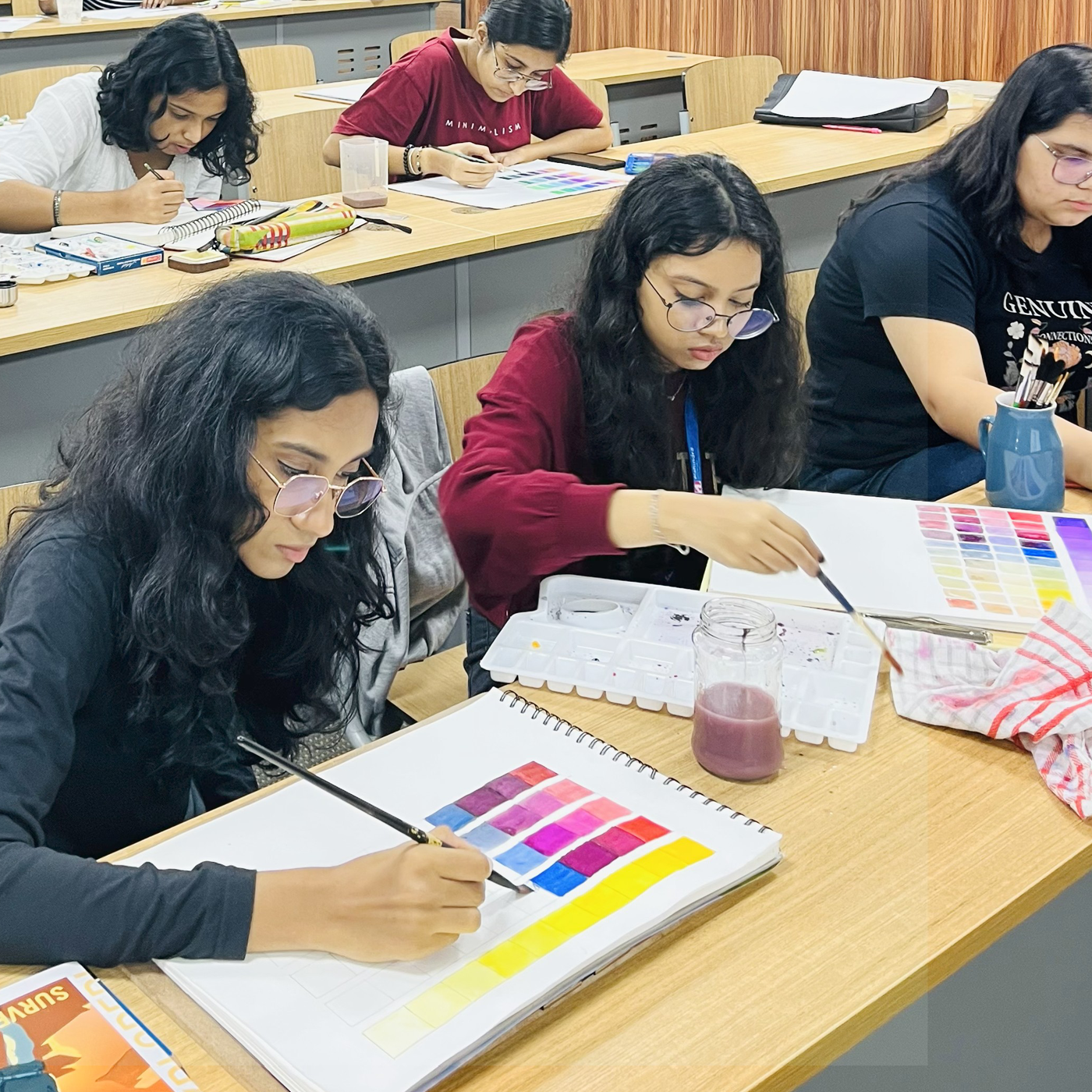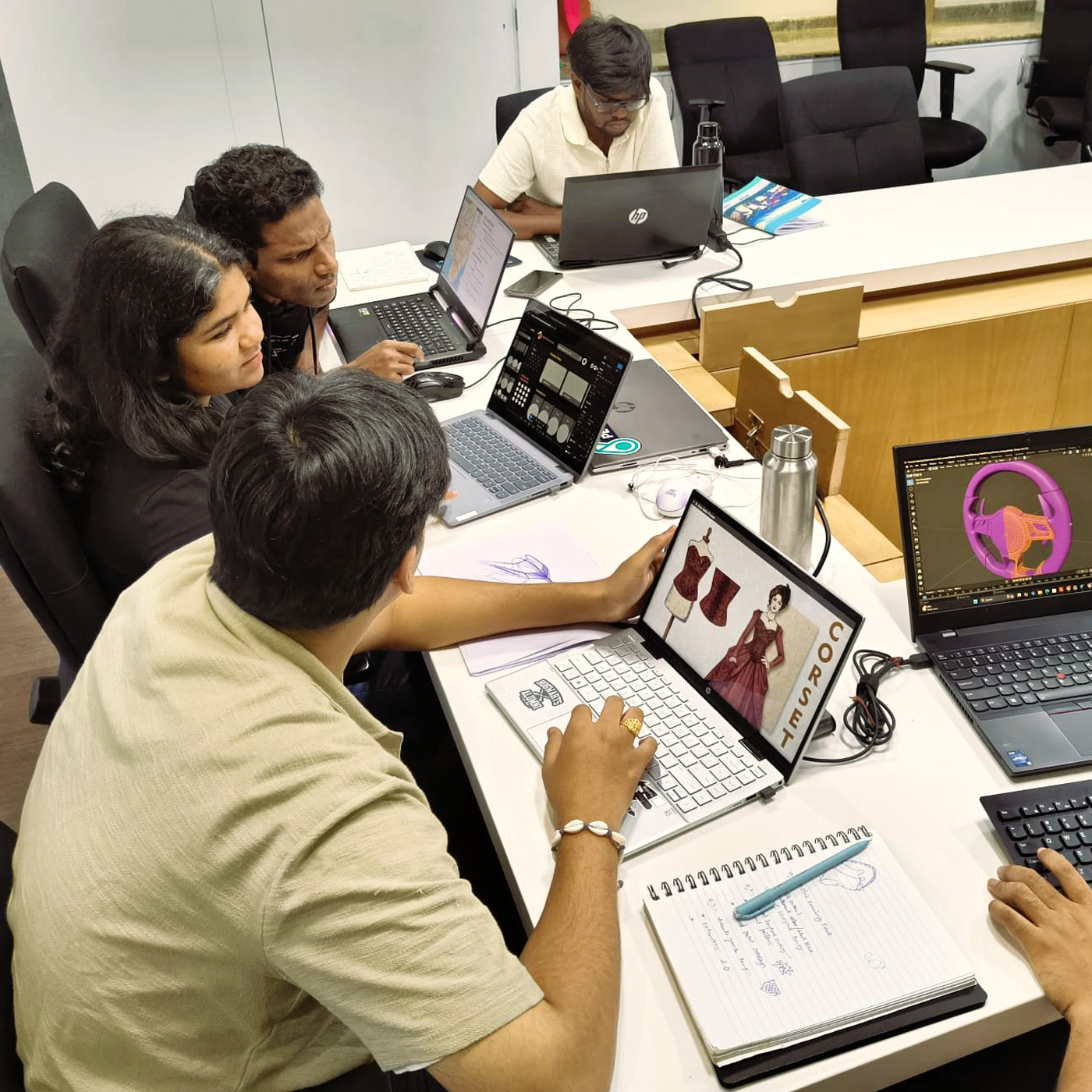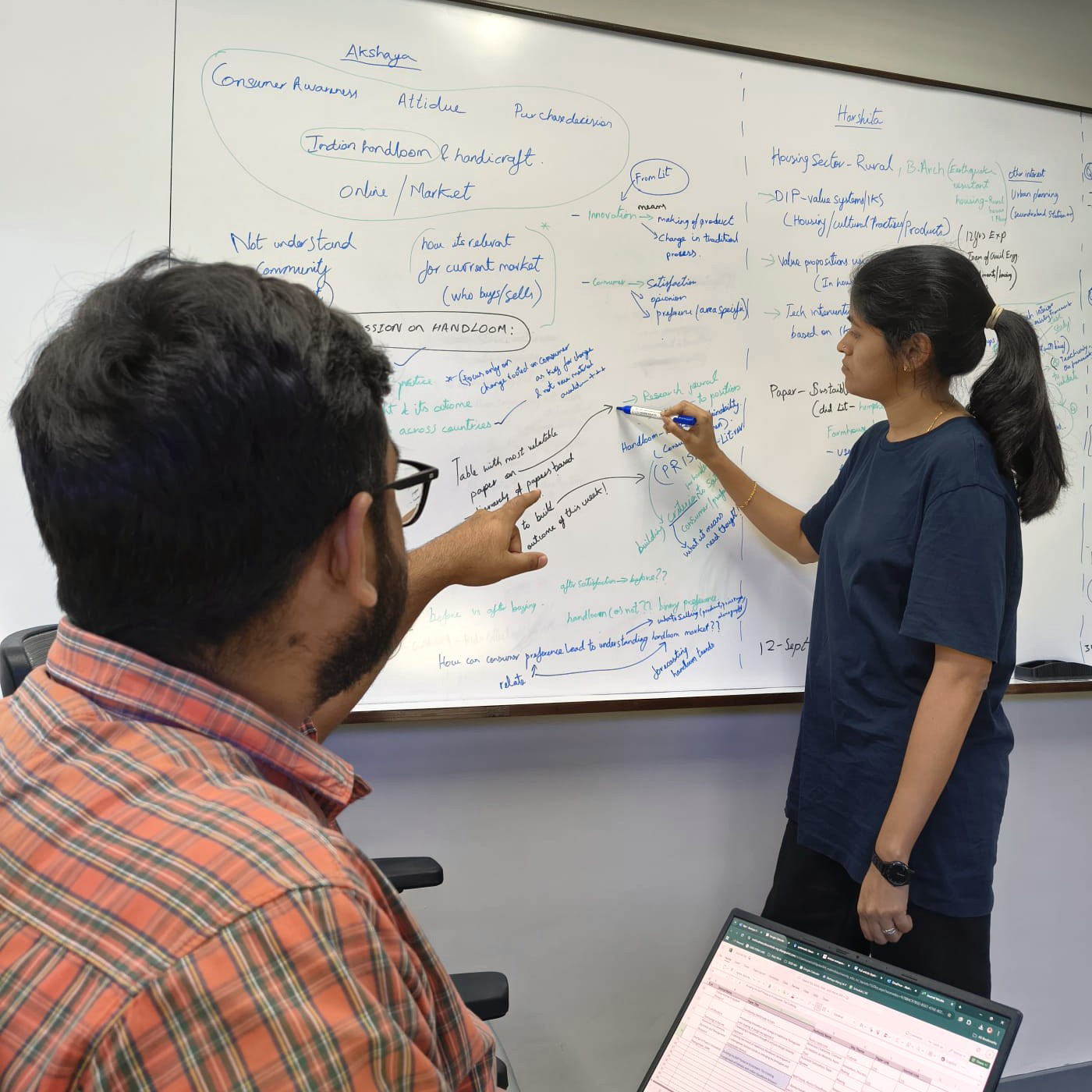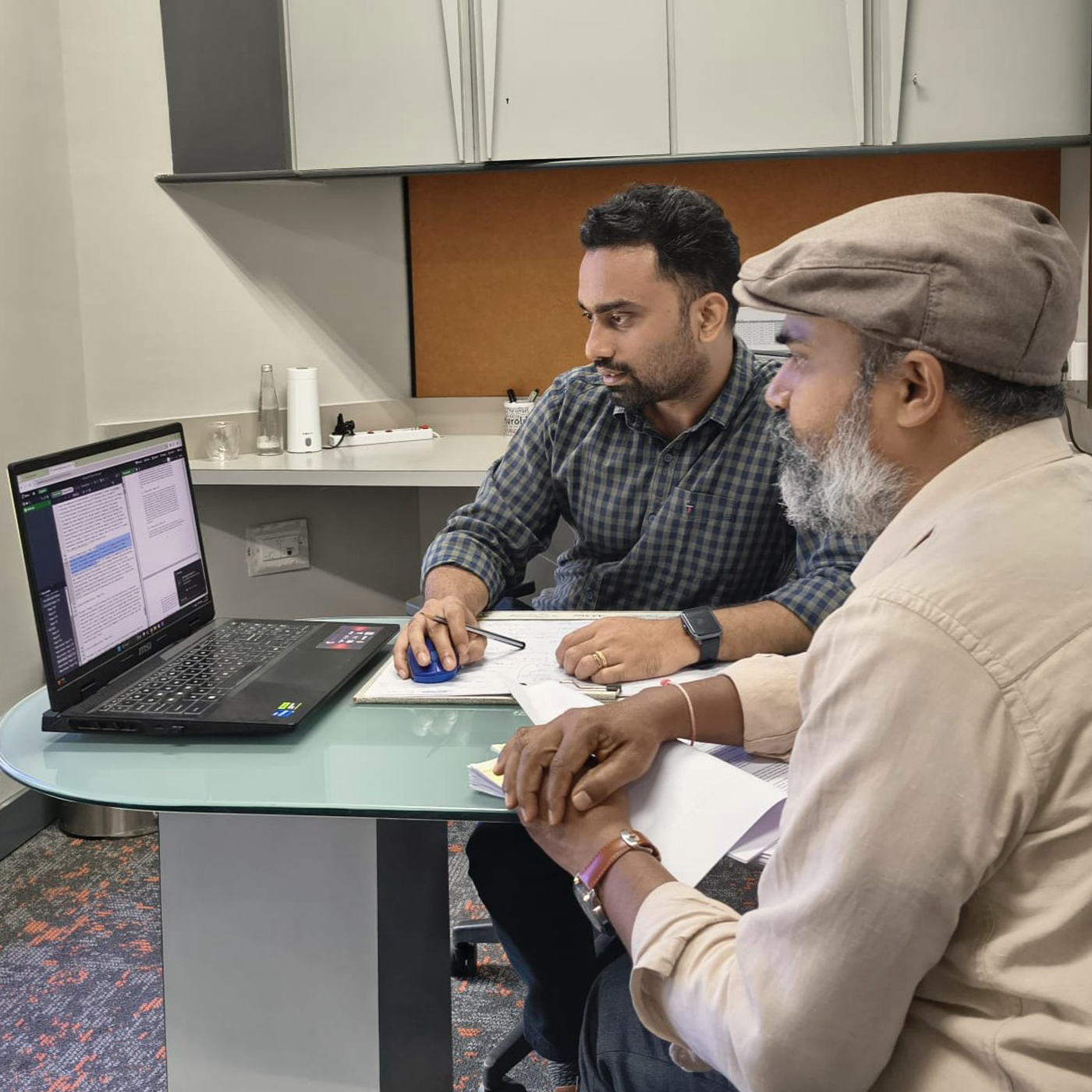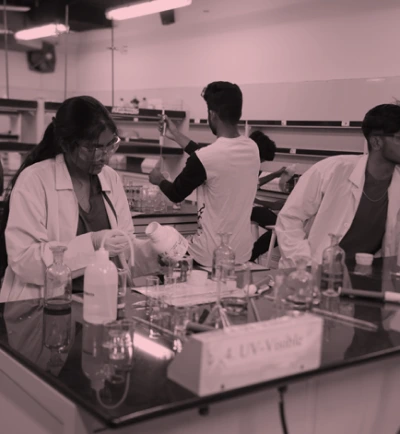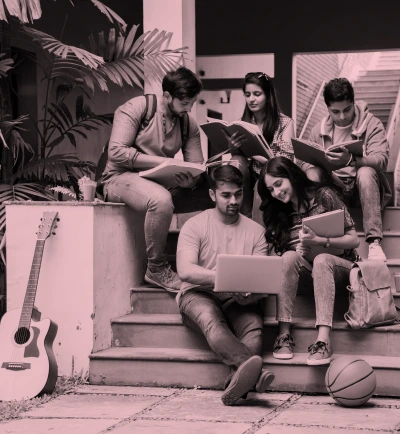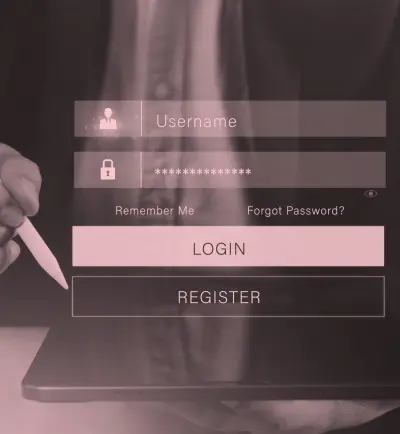Mission
The School of Design Innovation at Mahindra University is dedicated to nurturing designers to create impactful, human-centred solutions keeping in mind the local cultural practices and systems. The School’s focus is to encourage entrepreneurship and sustainability, to drive innovation that works for people, deliver real-world benefits, and inspires future-ready designers. The school’s endeavour is to create innovative leaders who will shape industries, communities, and economies for a better world.
Vision
The School of Design Innovation at Mahindra University envisions a world where designers drive meaningful change. They solve real-world problems and create transformative solutions. SDI aims to nurture designers who not only understand people but also develop impactful products and services that address societal and industrial challenges. The goal of the School is to foster and groom such young minds to be the future-focused innovative leaders.
Your Content Goes Here
Present State/Challenges:
Industrial design is evolving with a strong focus on sustainability, user-centric innovation, and material efficiency. Challenges include overproduction, environmental impact, and the need for circular economy practices.
Future Direction:
The future of industrial design lies in biodegradable materials, AI-driven optimization, and modular product design. Human-centred innovation, powered by IoT and smart manufacturing, will create adaptable, sustainable, and personalized products.
Your Content Goes Here
Present State/Challenges:
Interaction design struggles with balancing usability, inclusivity, and the ethical use of AI-driven interfaces. Many experiences lack true personalization and emotional intelligence.
Future Direction:
The future of interaction design will focus on adaptive, AI-enhanced user experiences, gesture-based interfaces, and neuro design (using brain-computer interfaces for seamless interactions). Ethical and human-centred AI will ensure technology serves people intuitively and inclusively.
Present State/Challenges:
Communication design faces challenges in information overload, digital saturation, and shrinking attention spans. Designers must create content that is both visually compelling and easily digestible.
Future Direction:
The future of communication design will be shaped by AI-generated content, immersive storytelling (AR/VR), and personalized, data-driven visual communication. Ethical design, accessibility, and inclusivity will play key roles in shaping the next era of media and branding.
Present State/Challenges:
Industrial design is evolving with a strong focus on sustainability, user-centric innovation, and material efficiency. Challenges include overproduction, environmental impact, and the need for circular economy practices.
Future Direction:
The future of industrial design lies in biodegradable materials, AI-driven optimization, and modular product design. Human-centred innovation, powered by IoT and smart manufacturing, will create adaptable, sustainable, and personalized products.
Present State/Challenges:
The apparel industry faces challenges in sustainability, fast fashion waste, and ethical production, as rapid consumer demand pressures brands to compromise on environmental and social responsibility.
Future Direction:
The future of apparel design is moving towards circular fashion, where AI-driven customization, biodegradable materials, and 3D-printed garments will redefine sustainability, reducing waste and promoting ethical production.
Present State/Challenges:
Interaction design struggles with balancing usability, inclusivity, and the ethical use of AI-driven interfaces. Many experiences lack true personalization and emotional intelligence.
Future Direction:
The future of interaction design will focus on adaptive, AI-enhanced user experiences, gesture-based interfaces, and neuro design (using brain-computer interfaces for seamless interactions). Ethical and human-centred AI will ensure technology serves people intuitively and inclusively.
Present State/Challenges:
Communication design faces challenges in information overload, digital saturation, and shrinking attention spans. Designers must create content that is both visually compelling and easily digestible.
Future Direction:
The future of communication design will be shaped by AI-generated content, immersive storytelling (AR/VR), and personalized, data-driven visual communication. Ethical design, accessibility, and inclusivity will play key roles in shaping the next era of media and branding.
Present State/Challenges:
Industrial design is evolving with a strong focus on sustainability, user-centric innovation, and material efficiency. Challenges include overproduction, environmental impact, and the need for circular economy practices.
Future Direction:
The future of industrial design lies in biodegradable materials, AI-driven optimization, and modular product design. Human-centred innovation, powered by IoT and smart manufacturing, will create adaptable, sustainable, and personalized products.
Present State/Challenges:
The apparel industry faces challenges in sustainability, fast fashion waste, and ethical production, as rapid consumer demand pressures brands to compromise on environmental and social responsibility.
Future Direction:
The future of apparel design is moving towards circular fashion, where AI-driven customization, biodegradable materials, and 3D-printed garments will redefine sustainability, reducing waste and promoting ethical production.
Present State/Challenges:
Interaction design struggles with balancing usability, inclusivity, and the ethical use of AI-driven interfaces. Many experiences lack true personalization and emotional intelligence.
Future Direction:
The future of interaction design will focus on adaptive, AI-enhanced user experiences, gesture-based interfaces, and neuro design (using brain-computer interfaces for seamless interactions). Ethical and human-centred AI will ensure technology serves people intuitively and inclusively.
Present State/Challenges:
Communication design faces challenges in information overload, digital saturation, and shrinking attention spans. Designers must create content that is both visually compelling and easily digestible.
Future Direction:
The future of communication design will be shaped by AI-generated content, immersive storytelling (AR/VR), and personalized, data-driven visual communication. Ethical design, accessibility, and inclusivity will play key roles in shaping the next era of media and branding.
Present State/Challenges:
Industrial design is evolving with a strong focus on sustainability, user-centric innovation, and material efficiency. Challenges include overproduction, environmental impact, and the need for circular economy practices.
Future Direction:
The future of industrial design lies in biodegradable materials, AI-driven optimization, and modular product design. Human-centred innovation, powered by IoT and smart manufacturing, will create adaptable, sustainable, and personalized products.
Present State/Challenges:
The apparel industry faces challenges in sustainability, fast fashion waste, and ethical production, as rapid consumer demand pressures brands to compromise on environmental and social responsibility.
Future Direction:
The future of apparel design is moving towards circular fashion, where AI-driven customization, biodegradable materials, and 3D-printed garments will redefine sustainability, reducing waste and promoting ethical production.
Chakku’s 7 Concerns of Innovation by Design
For the paradigm shift from Design to Design Innovation, the School adopts Chakku’s 7 Concerns for Innovation by Design as a guiding framework to think critically about how design can create value, foster sustainability, and enable meaningful change. Students are trained to recognize that design must deliver tangible outcomes while evoking user delight, positioning empathy and human experience at the heart of innovation.
The 7 concerns are 1. Cause – The resolve to solve a problem; 2. Context – Understanding the problem space & environment; 3. Clarity – Arriving at design insights; 4. Check – Creating a project brief; 5. Conception – Generating ideas and concept; 6. Crafting – Building mock-ups and prototypes; and 7. Connection – Delighting the user. The multiple courses of B.Des and M.Des programs align with these concerns while the students work on their assignments and thesis projects.
1st C – Cause
The resolve to solve a problem
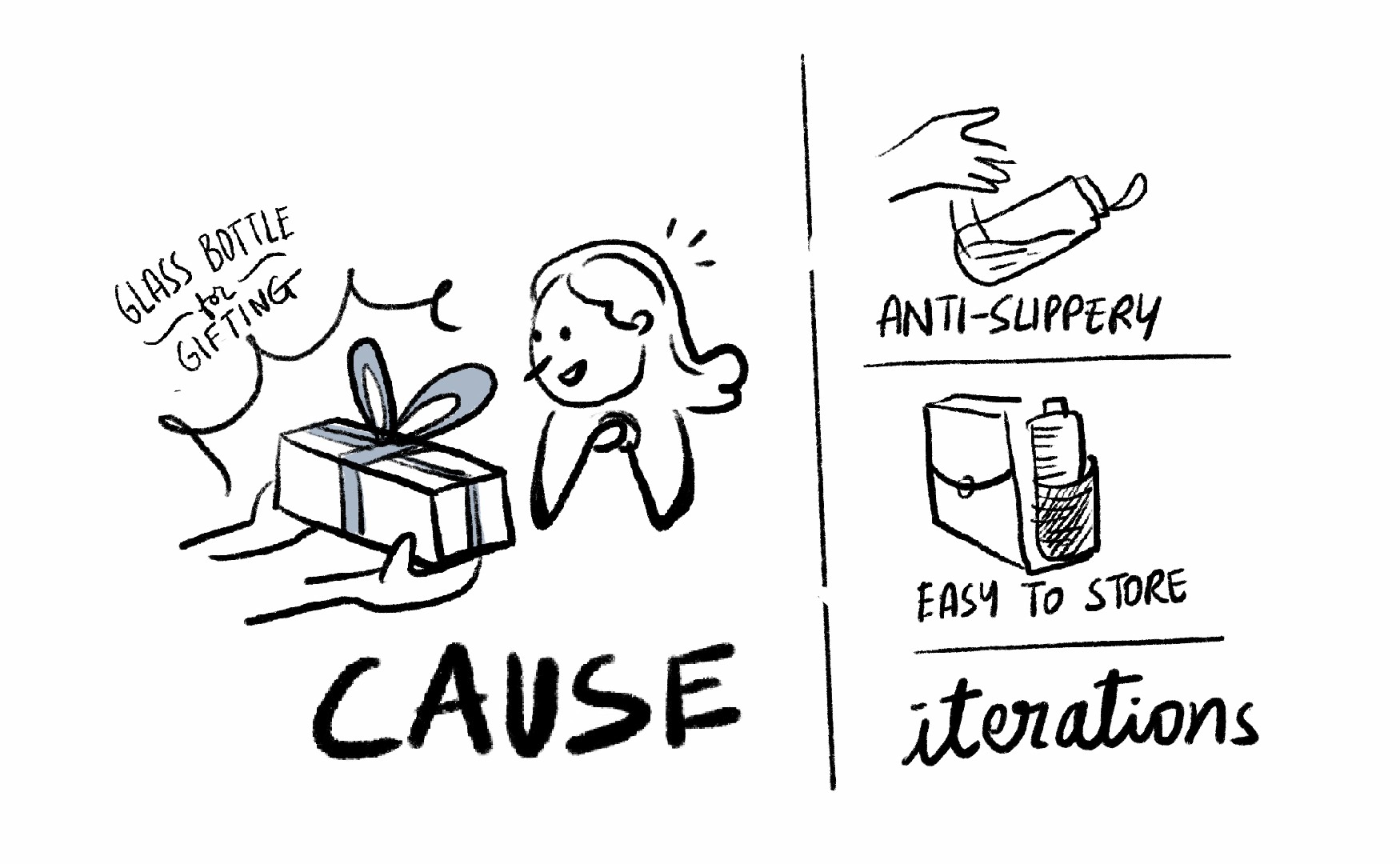
2nd C – Context
Understanding the problem space & environment
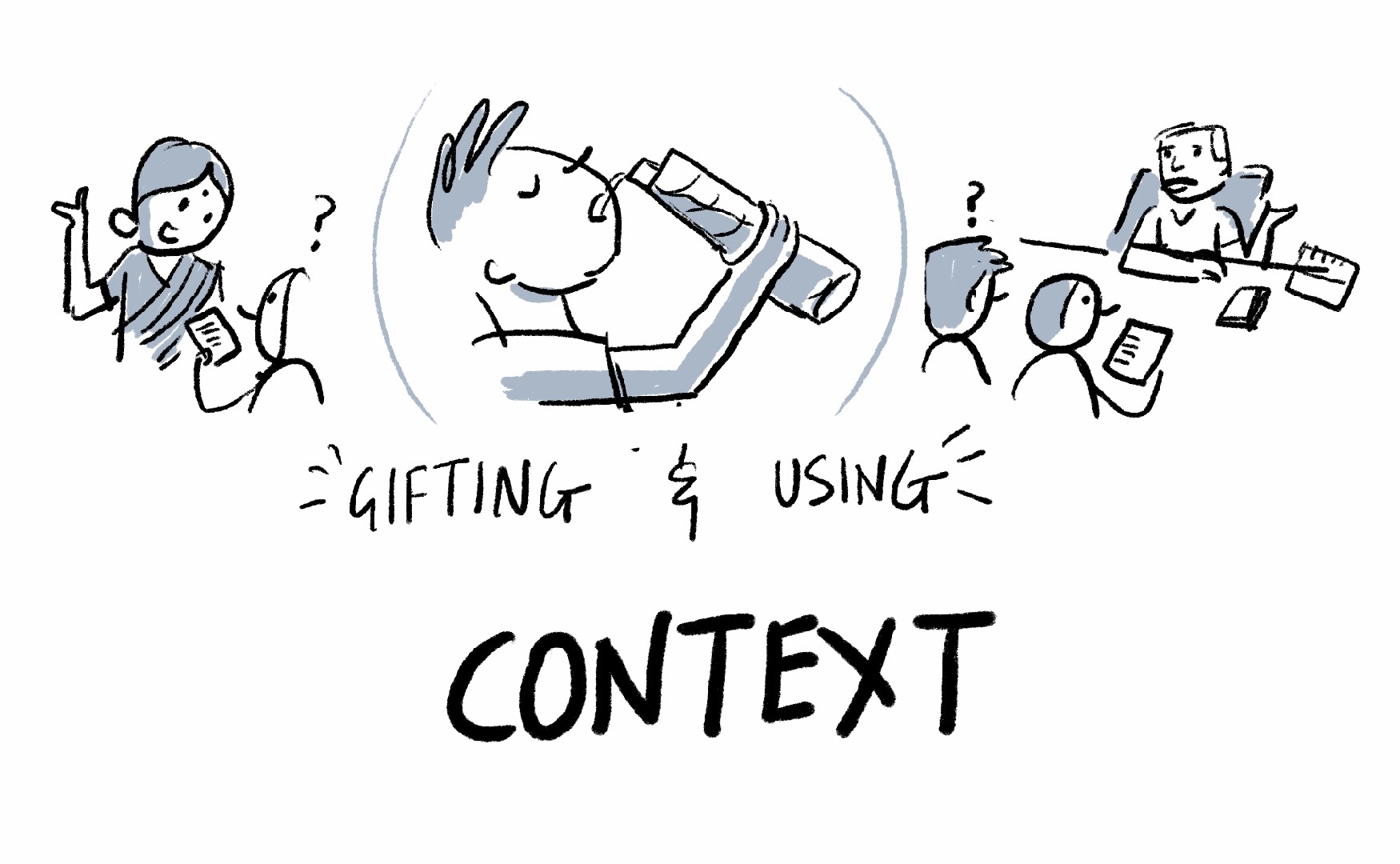
3rd C – Clarity
Arriving at design insights
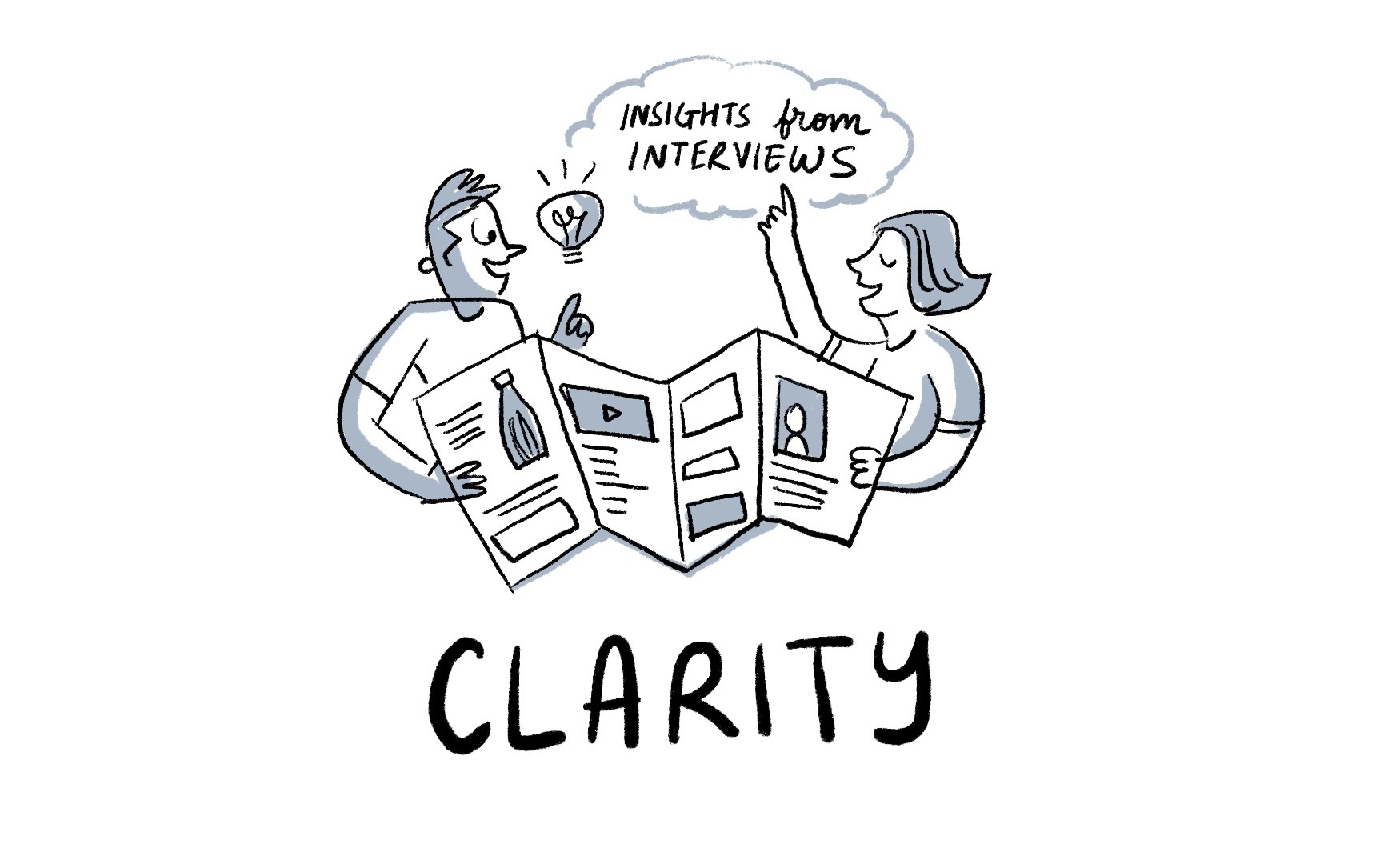
4th C – Check
Creating a project brief
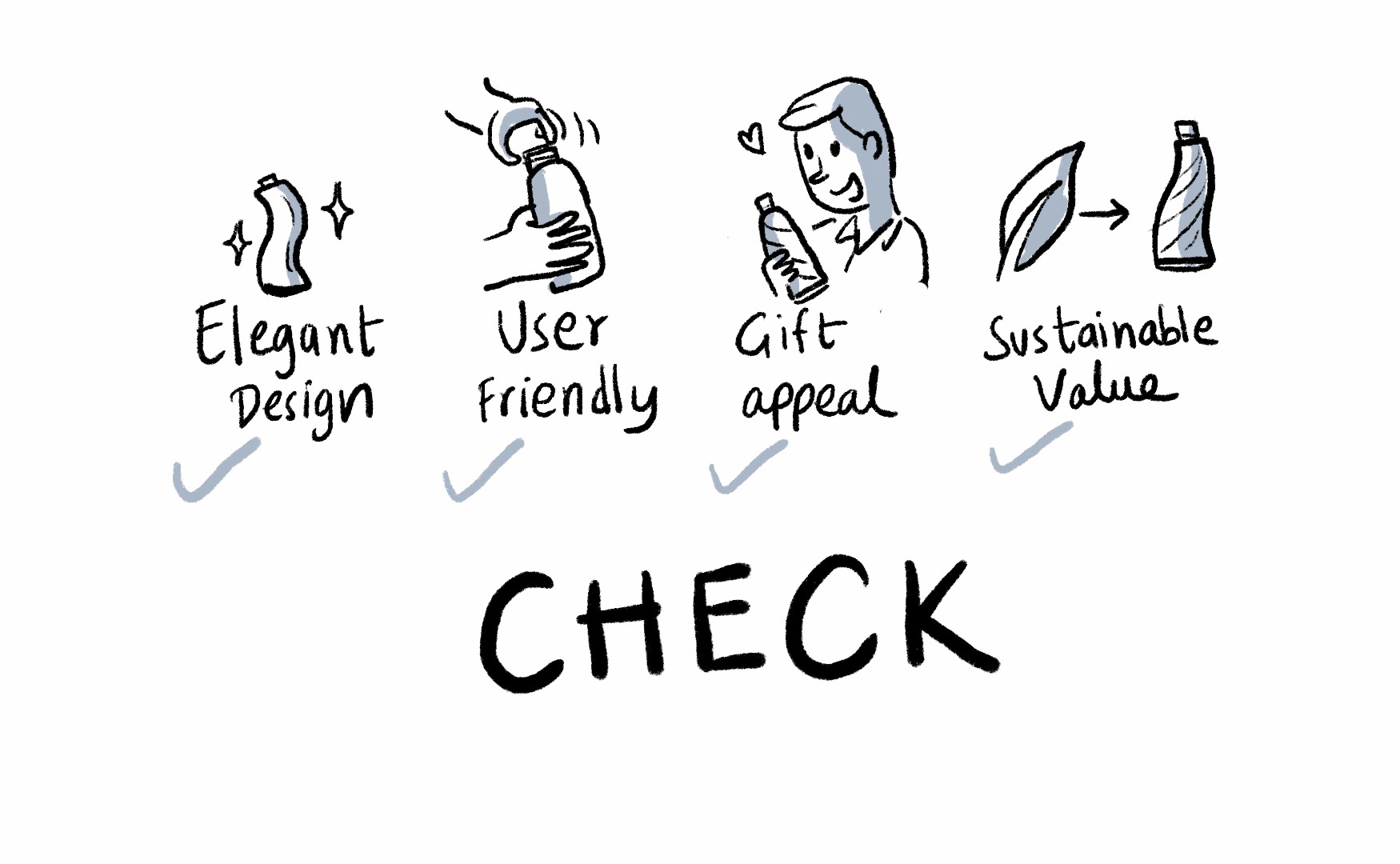
5th C – Conception
Generating ideas and concept
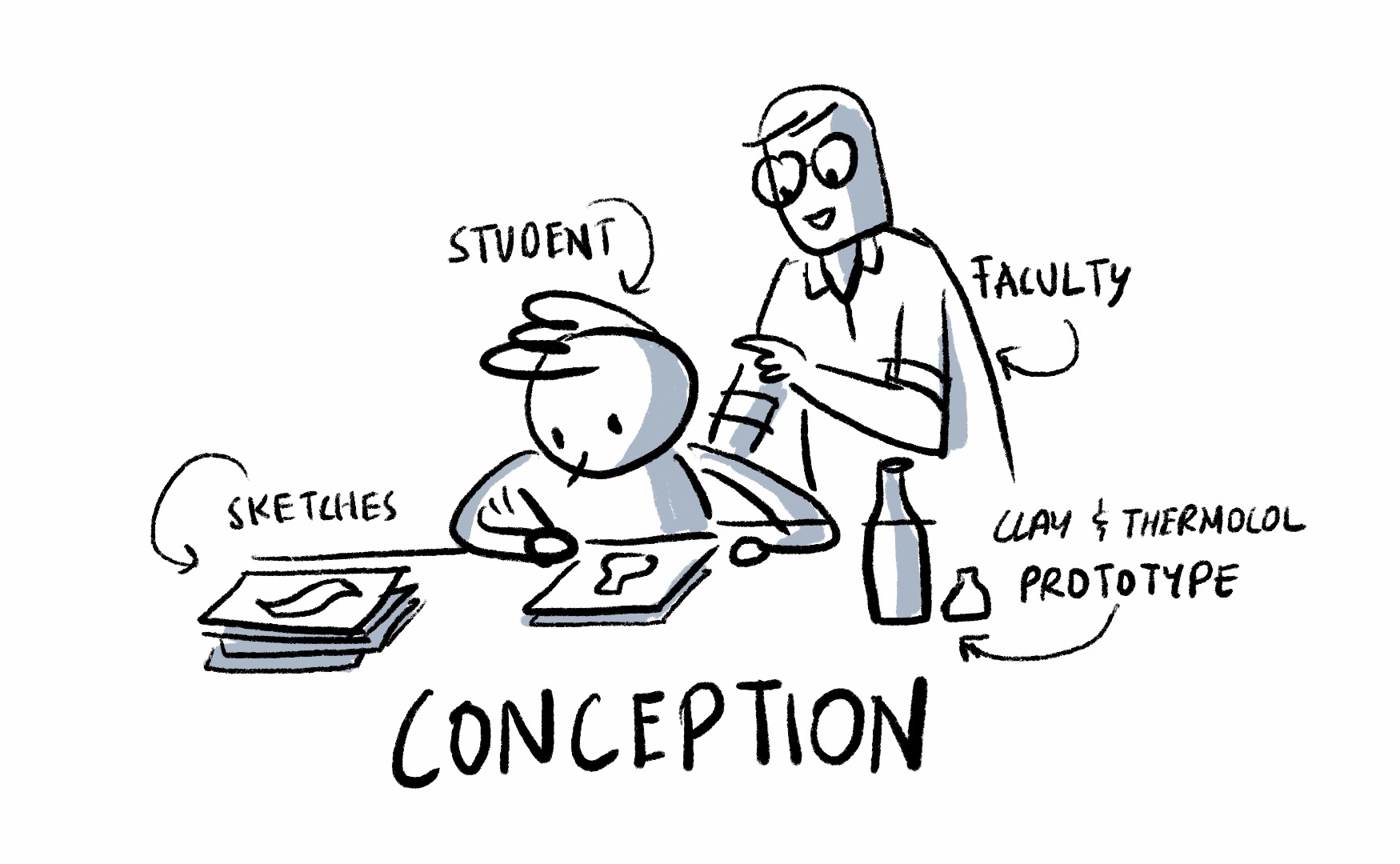
6th C – Crafting
Building mock-ups and prototypes
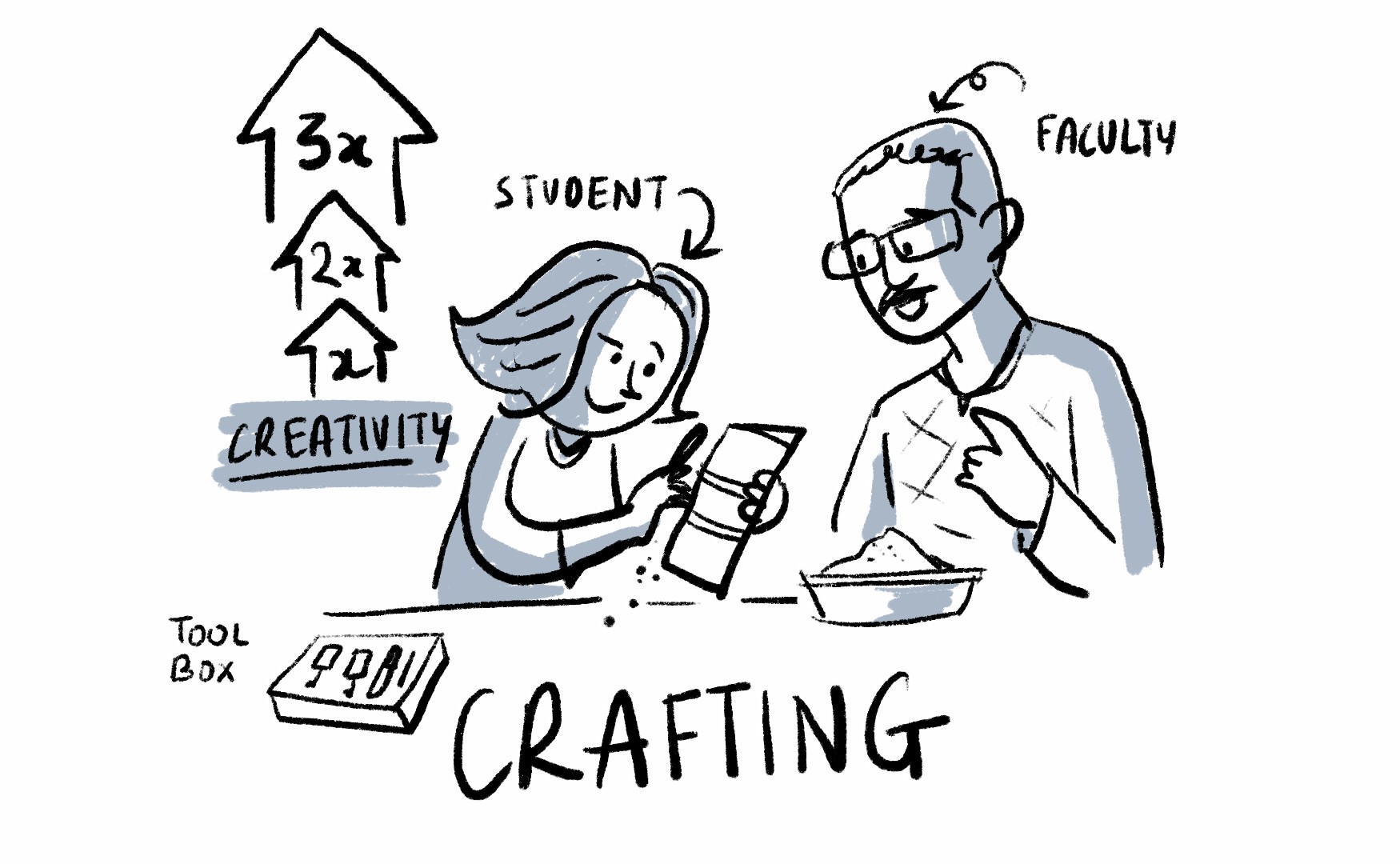
7th C – Connection
Delighting the user
